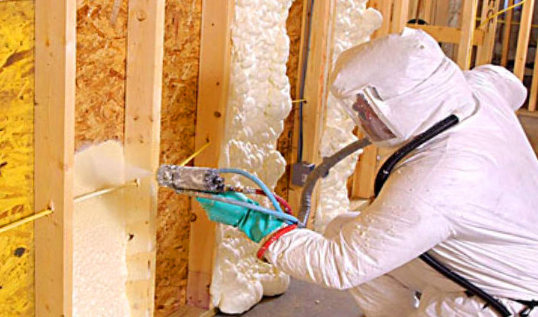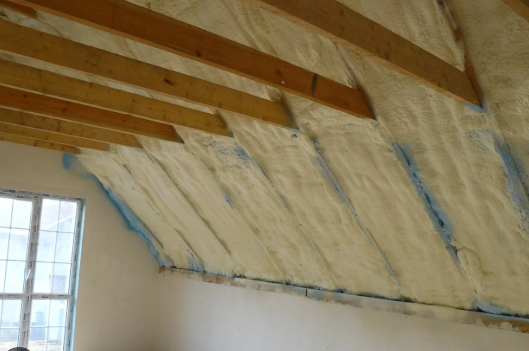Tips for Roof Construction and Repair and Much More
Roof insulation in Ottawa isn’t just a step in building or renovating a home; it’s a crucial investment in comfort, warmth, and savings. The quality of the insulation determines whether a home will be warm in winter and cool in summer, the amount of moisture, and how significantly your heating and air conditioning bills will be reduced.
In recent years, spray polyurethane foam insulation has become increasingly popular. It forms a durable, lightweight layer that puts less stress on the structure and a sealed layer that seals all cracks and reliably retains heat.
Let’s explore when this method is truly justified, its strengths and weaknesses, and how to use it to its full potential.
What is polyurethane foam and what types are there?
Polyurethane foam (PUF) is a foamed material that is applied to the surface of the building in liquid form. It quickly expands in volume and forms a durable, seamless coating. This makes it particularly suitable for roofs with complex shapes and structures, such as attics, pitched roofs, or multi-pitched roofs.
There are two main types of polyurethane foam:
Closed-cell foam (density 30–50 kg/m³) is durable, moisture-impermeable, and has low thermal conductivity; it is most often used for roofing.
Open-cell foam (density 8–12 kg/m³) is lightweight and breathable, suitable for interior partitions, partitions, sound recording rooms, and attics, where sound insulation is more important than waterproofing.
Much of the choice depends on the roof structure and the insulation needs.

When is it best to use closed-cell foam?
Closed-cell polyurethane foam is almost always chosen for roofing. Its advantages are obvious: high density, strength, excellent thermal and waterproofing properties, and good adhesion to wood, certain types of plastic, metal, and concrete.
The layer thickness is typically 5–10 cm, depending on the climate and roof structure. Work is completed quickly—tens or even hundreds of square meters can be treated in a single day, depending on the complexity of the project and the height of the work. The material hardens in just a few minutes, resulting in a monolithic, durable layer.
When is open-cell foam suitable?
Soft polyurethane foam with an open structure is used less frequently because it has poorer moisture resistance. However, it has its advantages: it dampens sound better and can be used for insulating attic spaces.
If insulation is being applied from the inside, ventilation and a vapor barrier are essential; otherwise, there is a risk of excessive moisture accumulation and, as a result, improper drying of the surface. When used externally, the foam is always covered with a protective coating, as it quickly deteriorates and becomes loose when exposed to ultraviolet light.
Advantages of roof insulation with polyurethane foam
High thermal insulation and noticeable reduction in heat loss
Absence of thermal bridges due to seamless spray application
Combination of insulation and waterproofing in a single material
Lightweight, which does not overload the structure
Resistance to moisture, mold, rodents, and insects
Durability: the layer retains its properties for decades
Quick installation: the entire job takes 1-2 days
Disadvantages and limitations
High cost compared to mineral wool or polystyrene foam, but much more practical, faster, and with more effective waterproofing and vapor barrier
Requires professional equipment and experience—it is virtually impossible to do the job yourself
Mandatory protection from sunlight when applied externally
Not always practical for temporary structures or unheated attics
When is foam the best choice, and when is it better? Decline
Suitable for:
attic spaces and roofs with complex shapes
when maximum tightness and protection from moisture and wind are required
when speed and quality of work are important
Not suitable for:
outbuildings or temporary structures
if the budget is limited
for DIY insulation without equipment or experience
Recommendations
Polyurethane foam is a modern and reliable method of roof insulation. It creates a durable thermal insulation layer that simultaneously protects against moisture and wind, lasts for decades, and requires little maintenance. However, it’s important to remember that this method is more expensive than traditional methods and requires a professional approach.
To ensure the best results, choose high-quality materials, consider the design features, and entrust the work to experienced professionals. When used correctly, roof insulation in Ottawa with foam will be an excellent investment that will provide warmth and comfort for many years to come.
